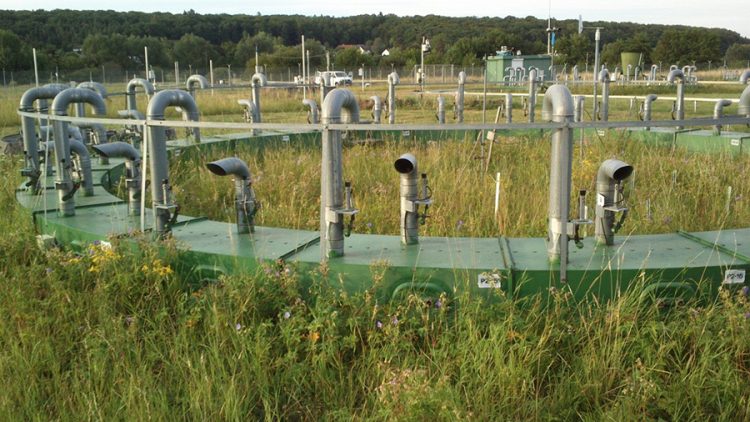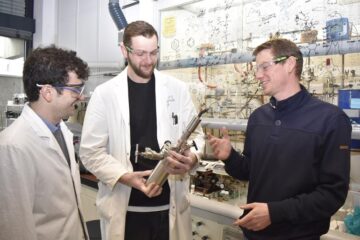Rain is important for how carbon dioxide affects grasslands

Experiment with carbon dioxide, photo by Louise C. Andresen.
An important, but uncertain, factor in climate research is the extent to which all ecosystems can accumulate carbon from the increasing atmospheric concentration of carbon dioxide.
Areas covered by grass and similar vegetation play a significant role in this context. Worldwide these areas cover 29 per cent of Earth’s ice-free land surface.
“These grasslands have great importance for carbon storage,” says Louise C. Andresen, a researcher at the University of Gothenburg and one of the researchers behind the new research study.
In the study the researchers examined how 19 different land areas that were exposed to varying amounts of precipitation – in Australia, Germany, New Zealand, Switzerland, the United States, China and elsewhere – reacted in field-experiments with elevated carbon dioxide concentrations.
“In general the response was an increase in plant growth of less than 10 per cent, but there were large variations.”
Spring rain affects plant growth
The results showed that it was easiest to predict how vegetation reacted to carbon dioxide during rainy periods. As the researchers expected, spring rain had a significant impact on the grasslands.
“Vegetation on grasslands with a very wet spring season increased most with elevated carbon dioxide concentration,” Andresen says.
In addition, biomass on land with a very dry low season increased more than on land with a wet low season.
“Elevated atmospheric carbon dioxide allows plants to save water,” Andresen adds. “We found that both the extra carbon dioxide and better water household helped plants in dry ecosystems too.”
Article name: Globally consistent influences of seasonal precipitation limit grassland biomass response to elevated CO2.
Contact: Louise C. Andresen, a researcher at the Department of Earth Sciences, University of Gothenburg; e-mail: louise.andresen@gu.se; mobile: +46 (0)721-84 06 53
Link to article: https://www.nature.com/articles/s41477-018-0356-x
https://science.gu.se/english/News/News_detail/?languageId=100001&contentId=..
Media Contact
All latest news from the category: Ecology, The Environment and Conservation
This complex theme deals primarily with interactions between organisms and the environmental factors that impact them, but to a greater extent between individual inanimate environmental factors.
innovations-report offers informative reports and articles on topics such as climate protection, landscape conservation, ecological systems, wildlife and nature parks and ecosystem efficiency and balance.
Newest articles

Lower dose of mpox vaccine is safe
… and generates six-week antibody response equivalent to standard regimen. Study highlights need for defined markers of mpox immunity to inform public health use. A dose-sparing intradermal mpox vaccination regimen…

Efficient, sustainable and cost-effective hybrid energy storage system for modern power grids
EU project HyFlow: Over three years of research, the consortium of the EU project HyFlow has successfully developed a highly efficient, sustainable, and cost-effective hybrid energy storage system (HESS) that…

Safer alternative for an explosive reaction
The chemical industry has been using a reaction with explosive chemicals for over 100 years – now Mülheim scientists have discovered a safer alternative. The Ritter Group of the Max…





















